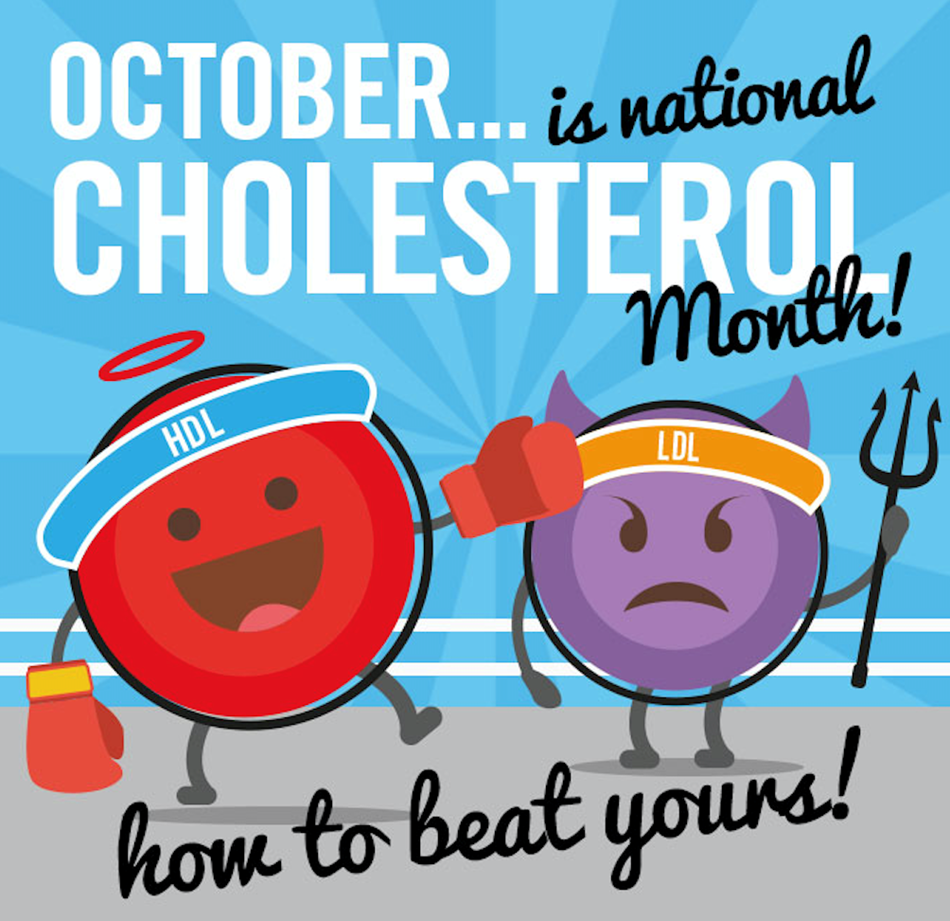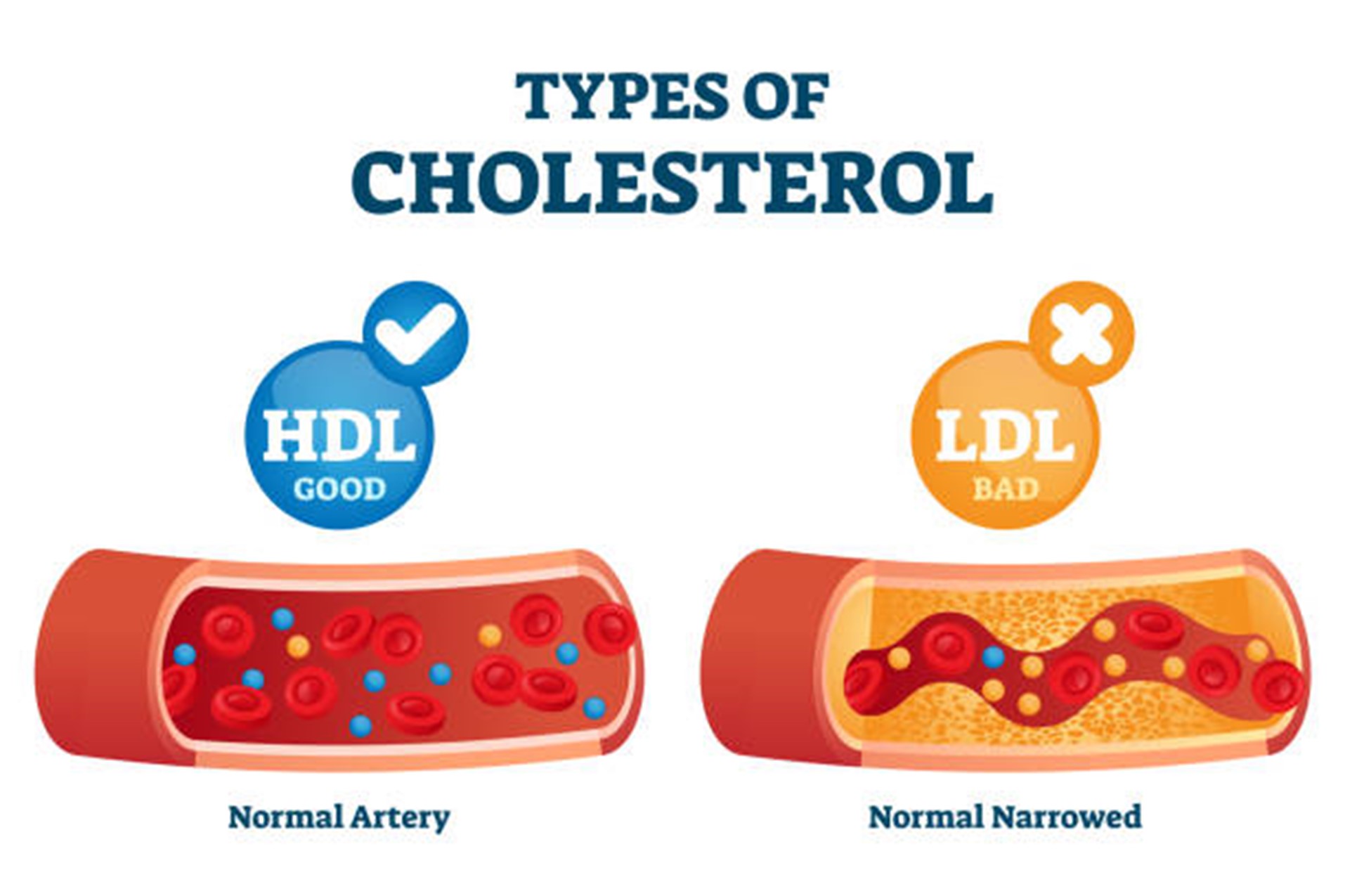All About Cholesterol
Did you know October is “Cholesterol Awareness Month?” Dr. John McDougall says, “Elevated cholesterol is one of the most common health worries among people of Western cultures. One reason for this heightened awareness is the sale of a class of powerful and expensive cholesterol lowering agents, known as HMG-CoA reductase inhibitors—known as ‘statins.’ These are among the most commonly prescribed medications, and the companies that produce these drugs are mind-blowingly rich from their sales.”

But according to Doctors McDougall, Caldwell Esselstein, T. Colin Campbell, Joel Fuhriman, Michael Greger, Neal Barnard (and many others), scientific research proves “no one dies from a high cholesterol.” Rather, people die when the arteries fail from years of unhealthy eating. The solution is a change in diet rather than constant ingestion of pills. But of course, pharmaceutical companies don’t want anyone knowing or understanding this.
That said, however, elevated cholesterol is a real crystal ball to your future and should not be ignored. So, it’s good to know what is considered normal blood cholesterol. It was once based upon what is common for Americans—210 to 220 mg/dl. Years ago, this was considered the desirable range until someone noticed that the average American was chronically sick and that the average American has a 50% chance of dying prematurely of heart disease or stroke.

“Average” today is being overweight or obese. Even diabetes has become the norm. “Average” you don’t want to be.
Unfortunately, to date, there are few official recommendations for an “ideal” cholesterol: the cholesterol level associated with the best possible health, and more specifically, the lowest risk of dying of heart disease. And this is where the recommendations of the above-listed doctors lead to now. For best possible health, here’s what these science-based doctors recommend for blood lipids (various fractions of cholesterol and triglycerides in mg/dl):

Total cholesterol levels
a) Less than 200 = desirable
b) 200-239 = borderline high
c) 240 or above = high
d) McDougall = less than 150 mg/dl
LDL cholesterol level, or so-called “bad” cholesterol
a) Less than 100 = optimal
b) 100-129 = near optimal/above optimal
c) 130-159 = borderline high
d) 160-189 = high
e) 190 and above = very high
f) McDougall = less than 90 mg/dl
HDL cholesterol levels, or so-called “good” cholesterol
a) Less than 40 = low
b) 60 or above = high
c) 40-60 = optimal
Triglyceride levels
Triglycerides are less important predictors of heart disease risk than cholesterol.
a) Normal less than 200 mg/dl (but you want to be better than normal, so shoot for 150mg/dl)
b) High = 200 to 500 mg/dl
c) Very high = in the thousands
These levels can be attained by almost everyone by following a consistent low-fat, no cholesterol diet and judicious use of medications. Once your cholesterol level is stable (and hopefully ideal) then you should check your blood levels every six to 12 months.

To clarify, a cholesterol-free and low-fat diet is built on fruits, vegetables, and whole grains (oats, quinoa, barley, and whole wheat).
So, with all this said, if you or someone you know might be interested in shifting to a more health-oriented diet, just get started by centering your menus on plant-derived foods. By eating lots of fiber and little animal fat, research shows total cholesterol levels can average under 150 mg/dL.
blog comments powered by Disqus

But according to Doctors McDougall, Caldwell Esselstein, T. Colin Campbell, Joel Fuhriman, Michael Greger, Neal Barnard (and many others), scientific research proves “no one dies from a high cholesterol.” Rather, people die when the arteries fail from years of unhealthy eating. The solution is a change in diet rather than constant ingestion of pills. But of course, pharmaceutical companies don’t want anyone knowing or understanding this.
That said, however, elevated cholesterol is a real crystal ball to your future and should not be ignored. So, it’s good to know what is considered normal blood cholesterol. It was once based upon what is common for Americans—210 to 220 mg/dl. Years ago, this was considered the desirable range until someone noticed that the average American was chronically sick and that the average American has a 50% chance of dying prematurely of heart disease or stroke.

“Average” today is being overweight or obese. Even diabetes has become the norm. “Average” you don’t want to be.
Unfortunately, to date, there are few official recommendations for an “ideal” cholesterol: the cholesterol level associated with the best possible health, and more specifically, the lowest risk of dying of heart disease. And this is where the recommendations of the above-listed doctors lead to now. For best possible health, here’s what these science-based doctors recommend for blood lipids (various fractions of cholesterol and triglycerides in mg/dl):

Total cholesterol levels
a) Less than 200 = desirable
b) 200-239 = borderline high
c) 240 or above = high
d) McDougall = less than 150 mg/dl
LDL cholesterol level, or so-called “bad” cholesterol
a) Less than 100 = optimal
b) 100-129 = near optimal/above optimal
c) 130-159 = borderline high
d) 160-189 = high
e) 190 and above = very high
f) McDougall = less than 90 mg/dl
HDL cholesterol levels, or so-called “good” cholesterol
a) Less than 40 = low
b) 60 or above = high
c) 40-60 = optimal
Triglyceride levels
Triglycerides are less important predictors of heart disease risk than cholesterol.
a) Normal less than 200 mg/dl (but you want to be better than normal, so shoot for 150mg/dl)
b) High = 200 to 500 mg/dl
c) Very high = in the thousands
These levels can be attained by almost everyone by following a consistent low-fat, no cholesterol diet and judicious use of medications. Once your cholesterol level is stable (and hopefully ideal) then you should check your blood levels every six to 12 months.

To clarify, a cholesterol-free and low-fat diet is built on fruits, vegetables, and whole grains (oats, quinoa, barley, and whole wheat).
So, with all this said, if you or someone you know might be interested in shifting to a more health-oriented diet, just get started by centering your menus on plant-derived foods. By eating lots of fiber and little animal fat, research shows total cholesterol levels can average under 150 mg/dL.
 Alice Osborne
Alice Osborne
Weekly Newsletter Contributor since 2006
Email the author! alice@dvo.com
Sources:
- www.yourthurrock.com
- www.vaisala.com
- www.istock.com
- www.bodystreet.com
